 William Woodward, Old Absinthe House, corner of Bourbon and Bienville Streets, New Orleans, 1904
William Woodward, Old Absinthe House, corner of Bourbon and Bienville Streets, New Orleans, 1904
William Woodward (1 May 1859 - 17 November 1939) was a U.S. artist and educator, best known
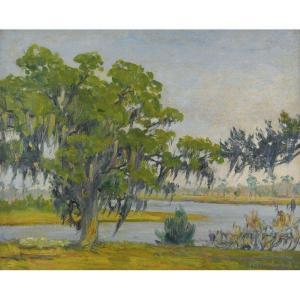 for his impressionist paintings of New Orleans and the Gulf Coast of the United States.
for his impressionist paintings of New Orleans and the Gulf Coast of the United States.Woodward was born in Seekonk, Massachusetts
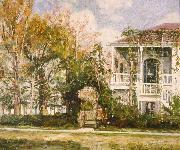 . His younger brother Ellsworth Woodward also became a notable artist. William Woodward studied art at the Rhode Island School of Design,
. His younger brother Ellsworth Woodward also became a notable artist. William Woodward studied art at the Rhode Island School of Design, and later at the Académie Julian
and later at the Académie Julian where he received instruction from Gustave Boulanger and Jules Lefebvre.
where he received instruction from Gustave Boulanger and Jules Lefebvre.In 1884 Woodward was hired to teach fine art, mechanical drawing, and architectural drawing at Tulane University in New Orleans.
 He became interested in the history and architecture of the city, especially the old French Quarter, which at the time had become largely neglected with many of the historic structures in a state of decay. In 1895 he led a successful campaign to save the Cabildo
He became interested in the history and architecture of the city, especially the old French Quarter, which at the time had become largely neglected with many of the historic structures in a state of decay. In 1895 he led a successful campaign to save the Cabildo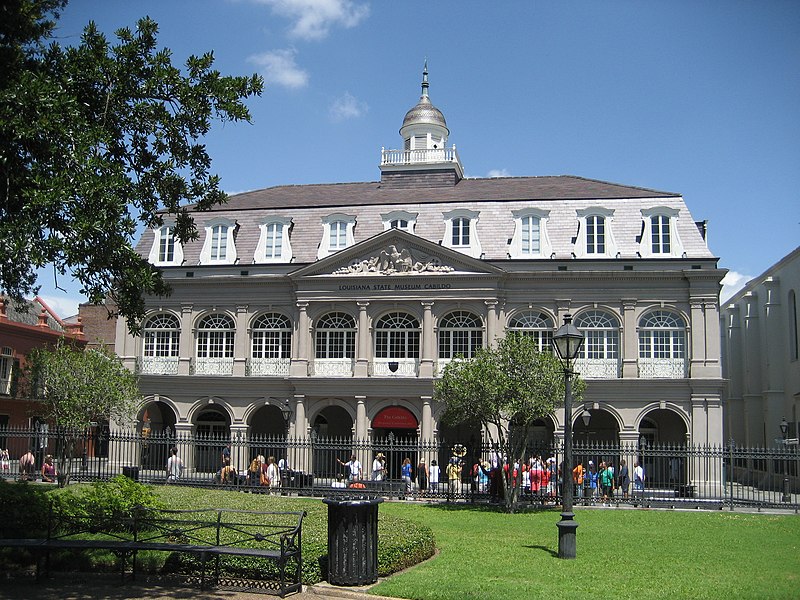 from demolition. His series of paintings of French Quarter scenes helped shape awareness of the neighborhood's architectural heritage and spurred the formation of the Vieux Carre Commission to help preserve it.
from demolition. His series of paintings of French Quarter scenes helped shape awareness of the neighborhood's architectural heritage and spurred the formation of the Vieux Carre Commission to help preserve it.He started teaching architectural engineering at Tulane in 1894 and helped found the Tulane School of Architecture in 1907, as well as the Newcomb School of Art.
In 1921 he suffered an accident and used a wheelchair for the rest of his life. He retired from Tulane the following year, and in 1923 moved to Biloxi, Mississippi.
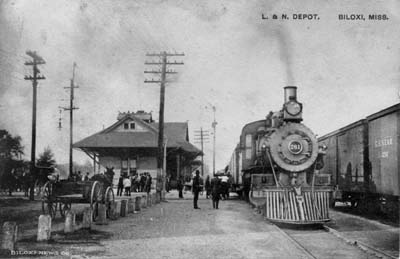 He invented the fiberloid dry etching process. He continued to paint and produce etchings for the rest of his life
He invented the fiberloid dry etching process. He continued to paint and produce etchings for the rest of his lifeIn New Orleans, Louisiana, Woodward played a pivotal role alongside William Faulkner in the preservation of the Vieux Carre (French Quarter)
 . He is best known for using his art to streamline the preservation movement in 1920's New Orleans, almost single-handedly saving
. He is best known for using his art to streamline the preservation movement in 1920's New Orleans, almost single-handedly saving  (a New Orleans Historic Landmark). In 1894, Woodward founded the architecture school and art programs of Tulane University. He invented a dry-etching process called fiberloid which is used by artists today. Devoting almost all of his work to the French Quarter, William Woodward created hundreds of drawings, oil paintings, watercolors, oil crayons and etchings of the city he loved. He is and will always be intertwined with art in New Orleans.
(a New Orleans Historic Landmark). In 1894, Woodward founded the architecture school and art programs of Tulane University. He invented a dry-etching process called fiberloid which is used by artists today. Devoting almost all of his work to the French Quarter, William Woodward created hundreds of drawings, oil paintings, watercolors, oil crayons and etchings of the city he loved. He is and will always be intertwined with art in New Orleans.Because of his unwavering interest in architecture, William Woodward's work shows depth in development. His focus on architecture included drawings, watercolor paintings, oil paintings, oil crayon, and etchings. After six decades of concentrated work on architectural scenes, he published his etchings of the Vieux Carré. From his earliest days, Woodward produced views of his family's homestead and other New England landscapes. Invariably, farm buildings and other structures in these early works are crisply delineated.
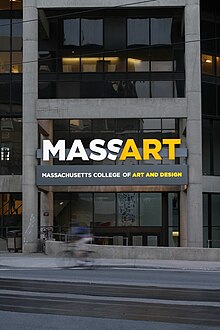 , where his interest in architecture began.
, where his interest in architecture began.Woodward's impression of the multicultural Vieux Carré in a crescent of the Mississippi River provided lifelong artistic inspiration. Unlike the wide-open spaces of his youth, the Quarter was crowded with European-style residences alongside docks, open air markets, dry goods stores, and hardware stores, all located in the shadow of St. Louis Cathedral on the city's main square.
Woodward's impressionistic views of the Vieux Carré were paramount in focusing attention on the historical structures, many of which were being recklessly destroyed. In 1895 Woodward was in the forefront of the movement against the demolition of the Cabildo, the seat of government during the Spanish Colonial period, rebuilt after the 1794 fire and one of the few surviving structures of the colonial era. This battle for historic preservation in the French Quarter ultimately led to the establishment of the Vieux Carré Commission.
Woodward was the first artist to focus intensely on the Vieux Carré "before it was fashionable," documenting the city's rich cultural heritage in vignettes of daily lifeÑstreet cleaners, milkmaids driving drayage carts, women at market, and residents otherwise engaged in their daily routines. These scenes have been said to "rank as his best of the urban fabric of New Orleans." He assimilated Impressionist tenets with his own style and ultimately developed a manner of artistic rendering suitable for capturing the soft light, moisture, and romantic essence of the French Quarter. His palette lightened and the contours of figures and architecture softened. His figures, which are imbued with a sense of immediacy, enliven his architectural scenes.
Woodward was active in every facet of architecture, including planning for Tulane's new buildings and the disposition of interior rooms and studios. Upon the organization of the College of Technology, Woodward was appointed Professor of Drawing and Architecture, and worked incessantly toward the establishment of a school of architecture, "to introduce in this region an awareness of professional values in design, and especially to provide exercises in the skills of mechanical, freehand and architectural drawing." Woodward's goal was ultimately achieved in 1907 when Tulane formally established the School of Architecture.
Woodward's concern for architectural preservation is also evident in the appearance of Jackson Square in his view of the Cabildo from St. Peter Street. One sees beyond the arches of the loggia into the greenery of the Square, the equestrian statue of Andrew Jackson, to the lower Pontalba Building and an outbuilding that no longer exists. Woodward printed the name of the Cabildo in block letters to underscore the historical importance of the structure, a device he used in another image of the Cabildo's gate.
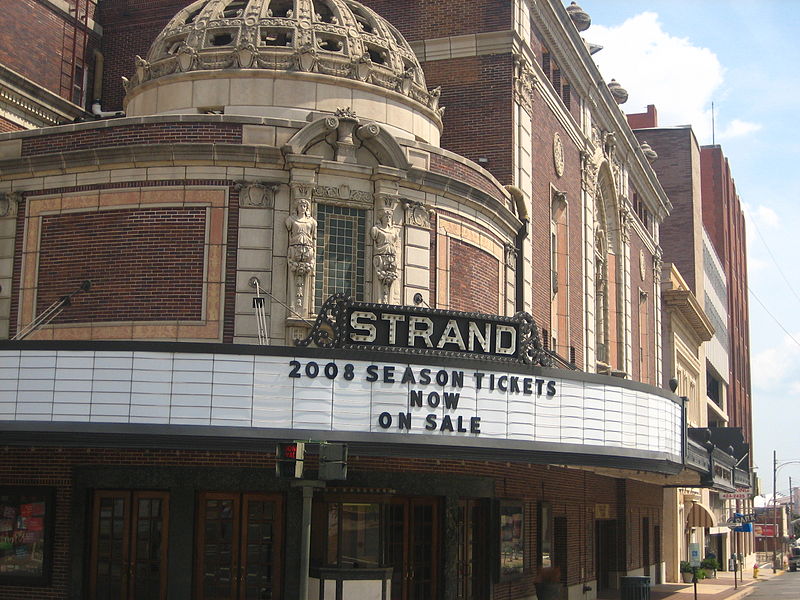
Woodward used a wheelchair following surgery in 1921 to remove a tumor. Retiring to the Mississippi Gulf Coast in 1923,
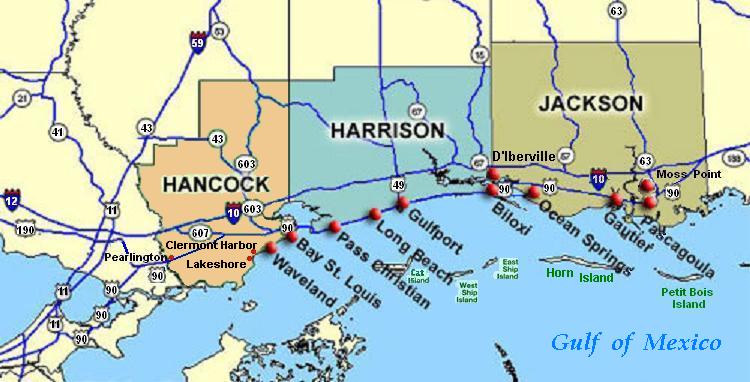 he continued his preservationist activities. His discovery of a plastic plate, Fiberloid, as a matrix for printmaking suited his soft-focused street scenes. Within five years he executed 115 etchings, which were then printed by his brother, Ellsworth. In 1938 William Woodward published French Quarter Etchings, reproducing fifty-four architectural views with annotations regarding history, renovation, and destruction of the structures. Many of his paintings, drawings, and etchings record historic landmarks that were no longer standing at the time of the publication. Another of Woodward's legacies comes through the 1964 posthumous publication of a small guide book, Early Views of the Vieux Carré A Guide to the French Quarter, which illustrates thirty-three of his architectural drawings and etchings. This spiral-bound guidebook, which sold out before it was released, ultimately sold over thirty thousand copies.
he continued his preservationist activities. His discovery of a plastic plate, Fiberloid, as a matrix for printmaking suited his soft-focused street scenes. Within five years he executed 115 etchings, which were then printed by his brother, Ellsworth. In 1938 William Woodward published French Quarter Etchings, reproducing fifty-four architectural views with annotations regarding history, renovation, and destruction of the structures. Many of his paintings, drawings, and etchings record historic landmarks that were no longer standing at the time of the publication. Another of Woodward's legacies comes through the 1964 posthumous publication of a small guide book, Early Views of the Vieux Carré A Guide to the French Quarter, which illustrates thirty-three of his architectural drawings and etchings. This spiral-bound guidebook, which sold out before it was released, ultimately sold over thirty thousand copies.William Woodward's reputation has been cyclical, but his work is appreciated for the French Quarter architecture. A dynamic force in New Orleans from 1884 to 1921, Woodward continued his activities on the Mississippi Gulf Coast until his death in 1939. Woodward, who spent his lifetime documenting street scenes at a time when many historic landmarks in the Vieux Carré were being demolished, was a pivotal figure in New Orleans art and architecture in the late nineteenth and early twentieth centuries.


No comments:
Post a Comment